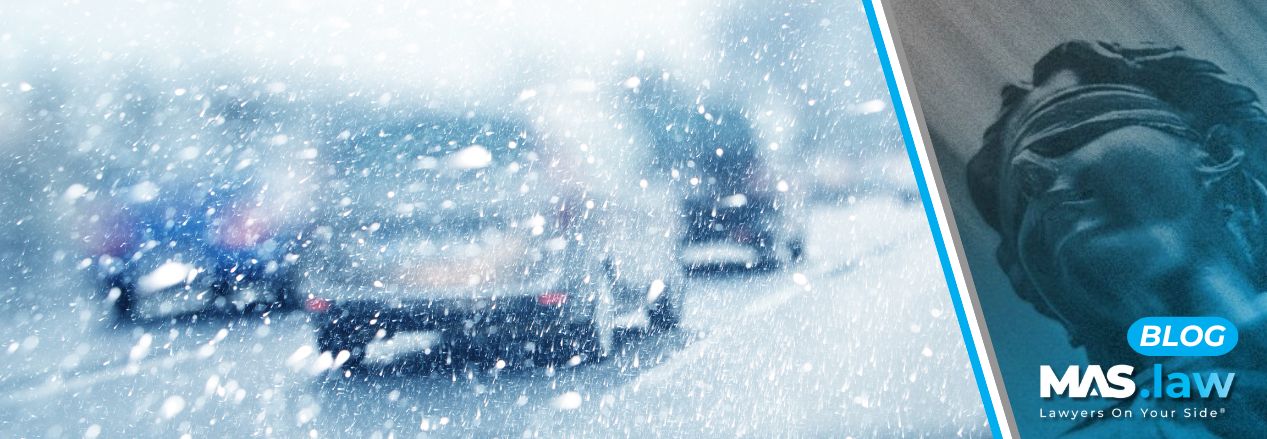
Driving in Winter accounts for 24% of weather-related crashes and presents a unique set of challenges that demand attention and care. Snow-covered roads and icy conditions reduce traction and make vehicles harder to control. Low visibility from heavy snowfall or fog also adds another layer of difficulty.
Accidents can become more common during this time, particularly for those unprepared for the hazards. Preparation significantly increases safety during cold-weather travel. Here is an overview of how to handle slippery roads and adapt to the cold conditions.
Preparation
Prepare Your Vehicle: This reduces the risk of mechanical failures and accidents throughout your drive.
Check the Weather: Drivers benefit from checking weather forecasts and road conditions ahead of time to anticipate potential hazards. Sudden changes in visibility, precipitation, or temperature can create unexpected challenges on the road.
Delay Your Travel: If necessary, delay your travel. Doing so may be the safer choice, especially during severe storms or widespread icy conditions.
Adjusting Your Driving Habits
Drivers face unique challenges during winter, requiring careful adjustments to stay safe on the road.
Drive Defensively: Defensive driving methods, such as maintaining safe distances and anticipating other drivers’ actions, reduce the likelihood of accidents. When driving, you should also avoid distractions. Using mobile devices or playing loud music can compromise focus and increase risks.
Slow Down and Maintain Your Distance: Slower speeds reduce the likelihood of losing control in icy conditions. Also, maintaining a greater distance from vehicles ahead allows more time to react to sudden movements.
Avoid Sudden Movements: Sudden braking or sharp turns increase the risk of skidding, so smooth and gradual inputs improve stability.
Use Lower Gears: Black ice, often invisible and treacherous, frequently forms on bridges and shaded areas, creating hidden dangers. Lower gears enhance control and traction when navigating slippery roads.
.jpg)
Dealing with Emergencies
Skidding: To recover from a skid, first, take your foot off of the gas. Next, when using standard breaks, pump them gently to slow the vehicle, or if you're using anti-lock brakes, apply steady pressure to them. Afterward, if your front wheels are skidding, gently steer in the direction you wish to go without overcorrecting. But if your rear wheels are skidding, steer in the direction your rear wheels are sliding.
Stuck in Snow: Rocking the vehicle by alternating between drive and reverse may provide enough momentum to escape. Alternatively, you can turn your wheels from side to side to push the snow out of the way. Once the snow around your car has been pushed away, lightly push on the gas to ease your car out.
Stranded: Staying visible to passing vehicles by using hazard lights can also reduce risks. Give emergency services clear details, allowing them to find your location effectively. When waiting for assistance, remain inside the car for shelter and safety. Use your emergency kit to dress warmly and conserve energy. Doing so will help you stay comfortable until help arrives.
MAS Law Is Here to Help
Driving in the winter poses a lot of threats, and even after taking all of the preventative measures, accidents can still happen. Our team provides dedicated legal support for car accident victims. We recently expanded with a new office now serving injured clients in Georgia. This expansion helps us address more people affected by accidents and injuries.
Our team can help you navigate the complex legal process in order to secure you the compensation you deserve. Don't face your case alone, contact our award-winning attorneys at MAS Law.
To schedule a free consultation with our team about your car accident, contact us online or call our office at (972) 460-9339.

.jpg)